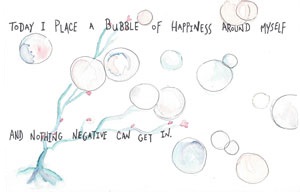DLTK's Crafts for Kids
Tips for Keeping Colors Transparent in Watercolor Painting
 Contributed by
Leanne Guenther
Contributed by
Leanne Guenther
Transparency is one of the most appealing qualities of watercolor paint. It allows light to pass through the paint layers and reflect off the white paper, creating a luminous, glowing effect. Here are some tips to help young artists maintain transparency in their watercolor paintings:
Tip 1: Use the right amount of water
The key to creating transparent colors is using the right balance of water and paint. Too little water will make the paint too thick and opaque, while too much water can cause the colors to become too washed out. Experiment with different water-to-paint ratios to find the perfect balance for transparent colors.
Tip 2: Start with lighter colors
When building up layers in your painting, start with lighter colors and work your way to darker ones. This will help maintain the transparency and luminosity of your colors, as lighter colors allow more light to pass through.
Tip 3: Allow layers to dry completelyBefore applying a new layer of paint, make sure the previous layer is completely dry. This will prevent the colors from mixing and becoming muddy, which can reduce transparency.
Tip 4: Use glazing techniquesGlazing is a technique where you apply thin, transparent layers of paint on top of one another. By using glazing, you can create depth and dimension in your painting while maintaining the transparency of your colors.
Tip 5: Choose transparent watercolor paintsSome watercolor paints are naturally more transparent than others. Look for transparent or semi-transparent paints when purchasing your supplies. The label or product description should indicate the paint's transparency.
Tip 6: Avoid overworkingOverworking an area by adding too many layers or scrubbing the paint can cause the colors to become muddy and less transparent. Try to work with fewer layers and use a light touch to maintain the transparency of your colors.
Tip 7: Clean your brushes and waterUsing clean brushes and water will help keep your colors transparent and prevent them from becoming muddy. Rinse your brushes thoroughly between colors, and change your water frequently.
Tip 8: Test your colors
Before applying a color to your painting, test it on a scrap piece of watercolor paper to ensure it's transparent enough. This will help you make adjustments to the water-to-paint ratio if necessary.
Tip 9: Practice and experiment
Maintaining transparency in watercolor painting takes practice and experimentation. Don't be afraid to try different techniques, paint ratios, and layering methods to find what works best for you.
By following these tips and focusing on maintaining transparency in your watercolor paintings, you can create luminous, vibrant artwork that showcases the unique qualities of this beautiful medium. Keep practicing and enjoy your artistic journey!
More:
Print friendly version of these instructions